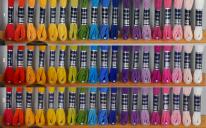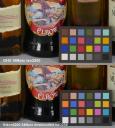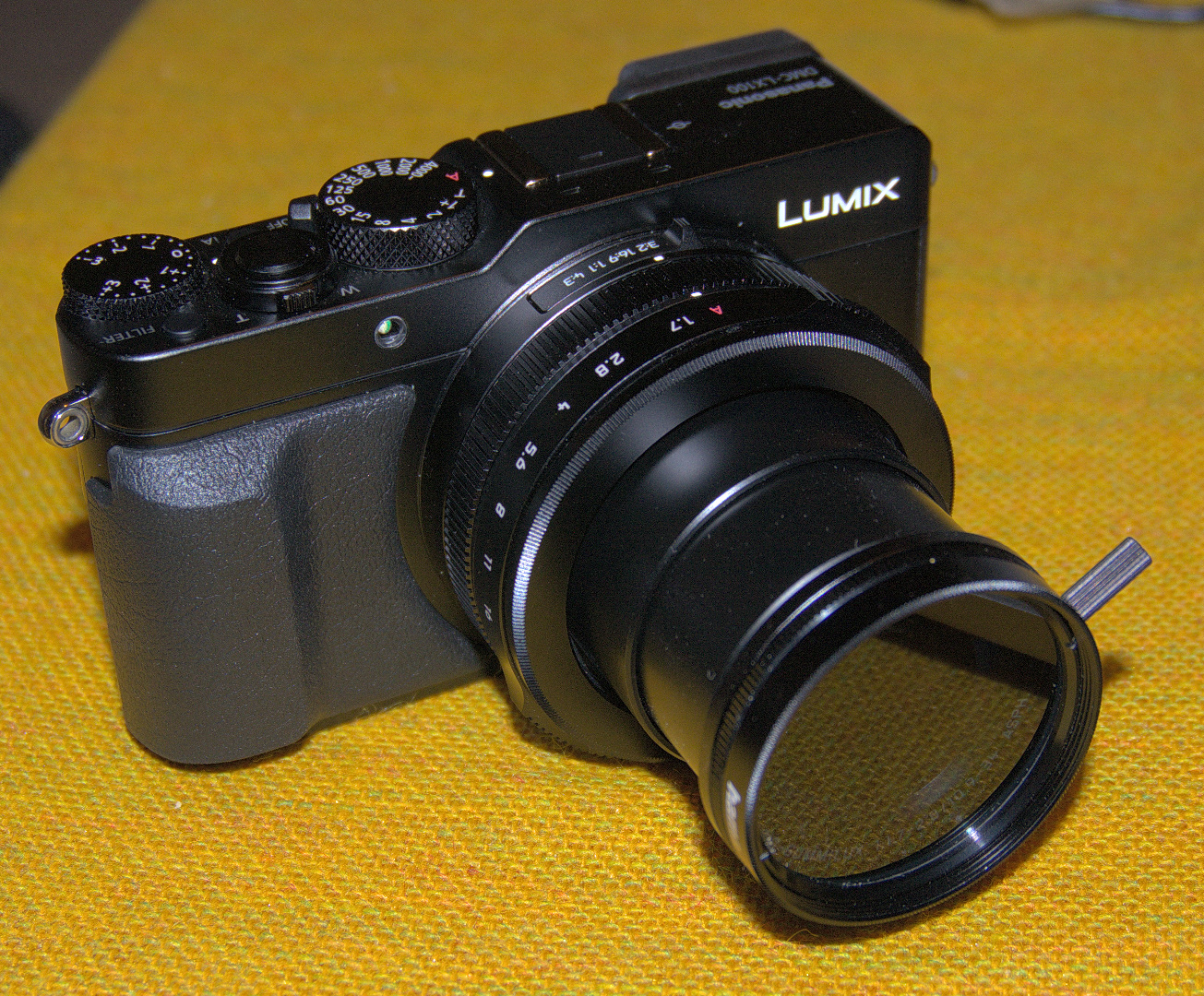
It allows to keep PV going, with more focus towards AI, but keeping be one of the few truly independent places.
-
This 4K LX100 video has plenty of people movement (sorry for the realistic colors, though :)).
-
For the majority of people – mildly enthusiastic photographers, holiday snappers, families and the like – again, it’s going to be more camera than they need. In fact, I think it’s going to be somewhat intimidating because of the apparent lack of automation and unexpected results if one of the dials inadvertently gets knocked off position. It will be a clear step up from the cameraphone or compact and have more than enough resolution for Facebook or email. For the serious amateur coming from an older camera or smaller format, the size and level of control will delight and liberate. For those coming from current-generation M4/3, performance will be as-expected, but again, the form factor will be liberating – possibly liberating enough to just pair it with a GM5 and say 75/1.8 or 35-100/2.8 for telephoto needs, and be done completely. Travellers on a serious weight budget will love it.
http://blog.mingthein.com/2014/11/12/opinion-review-the-panasonic-lx100-leica-d-lux-109/
-
-
Battery testing "original vs. 3rd-party" finished for now. The contestants:
The original Panasonic battery claims to have a capacity of 1025mAh*7.2V = ~7.4Wh. Its retail price in Germany, when bought directly from the Panasonic shop is 70 €, when bought from the cheapest online shop its price is currently 48 €.
The Patona battery claims to have a capacity of 750mAh*7.2V = ~5.4Wh. Its retail price when bought directly from the Patona online shop is 13 €.
Test setup: I measured the time that I could permanently shoot video at 1080p50 with manual focus on a tripod, display on. Both batteries were newly bought and were charged with the Panasonic supplied charger.
The findings:
The original Panasonic battery operated with "3 bars on the battery indicator" for 110 minutes, then 23 minutes with "2 bars", then 25 minutes with "1 bar", then the indicator turned flashing red and the recording stopped soon thereafter. So in total 158 minutes.
The Patona battery lasted 100 minutes with "3 bars", then 5 minutes with "2 bars", then 2 minutes with "one bar", then the indicator turned red-flashing and soon thereafter the camera stopped recording and shut itself off. So in total 107 minutes.
So the Panasonic original battery lasted 48% longer, at a 538% (Panasonic shop) or 369% (cheapest web shop) higher price, or in other words: You get 3.6 times or 2.5 times less battery capacity per money unit when buying Panasonic original batteries. (There are also even cheaper 3rd-party batteries available on the market, but Patona batteries were one of the few products guaranteed to contain overheating and overload protection circuits.)
For me the preference is clear: I'll certainly not pay the outragous prices Panasonic asks. And since I have to change the battery before each dive, anyway, I don't miss the higher capacity and longer "power running out" warning period of the original.
-
Sensor comparison LX100, GH4, Samsung NX1 at iso1600. Can you tell which is which? Pana photos are upscaled to Nx1 size.

 all-1600.jpg2339 x 1454 - 1M
all-1600.jpg2339 x 1454 - 1M -
not sure but :
1: NX1
2: LX100
3: GH4
-
This would have been my guess as well. Lenses are not specified, but (1) is sharper than (3), which is sharper as (2).
-
-
The right answer is: 1. NX1, 2. LX100, 3 GH4.
IQ seems to be comparable to sensor size and resolution. LX100 is muddier than GH4. NX1 has less noise than others even when it has the highest pixel density. The back illuminated sensor seems to help.
Upscaling is not reducing IQ, it just shows than 12Mpix is worse than 16Mpix or 28Mpix.
-
@Vesku: Am I assuming right that the GH4 and NX1 pictures were taken using prime lenses? Using a zoom lens with similar focal range would allow for a fairer comparison.
-
I would have chosen the correct ordering as well. It is pretty clear from the images, and it makes sense. I assume you took the sample images from Imaging Resource? I typically just use their Comparator tool to compare two cameras, but...you can only see two at once. Thanks for posting all 3 in one image.
The NX1 is an interesting new camera, but..even though it is 'only' an APS-C size sensor, it's a BIG camera with BIG lenses (if you want good lenses). It should yield 'better' image quality. But...at the trade off of being bigger and heavier. The LX100 will fit in a jacket pocket. Not so the NX1, so...this is really Apples to Oranges?
-
I do not see the point of this comparison of jpeg stills for videographers:
If you want to see what any camera can really do for stills, you shoot RAW. Looking at jpegs is not sufficient. But who cares anyway.
This forum is about video; the jpeg, compressed stills tell us almost nothing about video performance. Many Canon cameras take great stills, and really bad, low resolution artifact-laden video. A recent set of reviews showed (if you compare performance) that the LX100 as a video camera has higher resolution and better low-light performance than the NX1 in video. And it fits in your pocket.
NX1 review:
http://cameras.reviewed.com/content/samsung-nx1-digital-camera-review
LX100 review:
http://cameras.reviewed.com/content/panasonic-lx100-digital-camera-review
Look at the science sections of the NX1 and LX100 reviews for video specs.
-
2.This forum is about video; the jpeg, compressed stills tell us almost nothing about video performance. Many Canon cameras take great stills, and really bad, low resolution artifact-laden video.
It is not really correct, any good stills are also welcome.
-
Lets not take these comparisons too seriously. I just want to give some perspective where different cameras are at this moment. This comparison was about sensor IQ, not video. GH4 was using high quality prime like always in Imaging Resource. I think that a JPG photo can give us an idea of sensor quality. Not dyn range but noise and color clarity.
-
Jpegs are processed RAW and thus do not necessarily reflect sensor IQ and certainly not color "clarity"; they also reflect the in-camera settings (such as NR and sharpening) and the in-camera jpeg processing. Many users of the LX100 camera report that when they process RAW photos in an editor they get much better photos than the in-camera jpegs (this could be also true for the comparison cameras). To assess what the sensor can do for stills, one should start with RAW files. For comparison the settings - WB, saturation, sharpness, NR -in an editor from the RAW stills should be the same, or perhaps what are best for the camera. Of course, I do not really care about the sensor, if the sensor sampling/processing for video is poor.
-
@Vesku - It's fairly obvious that a camera with a higher resolution will yield better detail, and that a larger sensor helps with low light (and even if each pixel may be smaller, the overall surface and resolution means downsampling will still yield better quality).
As markr041 said, this does not have much meaning in terms of video though :)
-
APS-C 24Mpix Nikon5200 has worse IQ in iso3200 than GH4. So more pixels and bigger sensor is not always helping. I think that NX1 IQ is phenomenal.
Sorry for offtopic.

 gh4-nikon5200.jpg1146 x 1279 - 504K
gh4-nikon5200.jpg1146 x 1279 - 504K -
@Vesku. I would expect that can be the case, as I'm pretty sure the GH4 has a newer sensor. Interesting though.
-
It was mentioned before that 43mm filters are actually mountable on the LX100, here's an example with a (cheap) pole filter mounted on my LX100:


 lx100_with_pole_filter.jpg1305 x 1080 - 1M
lx100_with_pole_filter.jpg1305 x 1080 - 1M -
How to change menu language on LX100 (japanese model) ?
My wife bought the LX100 directly from Japan and now cannot operate the menu which is only in Japanese. I am looking to find desperately the solution.
Until now, didn't find, I will be regretful for such link, otherwise it was a big mistake.
Changing menu language for JP models is possible for Sony RX100:
https://www.flickr.com/groups/rx100/discuss/72157636828009223/
I hope it will be possible for Panasonic LX100 JP model.
A screen capture of my LX100:
I'm a new member. Wonderful site... Thanks for what you're doing...
Thanks for helping / advising, Chatxxnoir.
-
How to change menu language on LX100 (japanese model) ?
I think I answered you - it is impossible.
-
Last question : with an original firmware, it will be possible with PTool ?
Thnx...
-
With an original firmware, it will be possible with PTool ?
I hope you can read. I already answered your question.
Howdy, Stranger!
It looks like you're new here. If you want to get involved, click one of these buttons!
Categories
- Topics List23,992
- Blog5,725
- General and News1,354
- Hacks and Patches1,153
- ↳ Top Settings33
- ↳ Beginners256
- ↳ Archives402
- ↳ Hacks News and Development56
- Cameras2,367
- ↳ Panasonic995
- ↳ Canon118
- ↳ Sony156
- ↳ Nikon96
- ↳ Pentax and Samsung70
- ↳ Olympus and Fujifilm101
- ↳ Compacts and Camcorders300
- ↳ Smartphones for video97
- ↳ Pro Video Cameras191
- ↳ BlackMagic and other raw cameras116
- Skill1,960
- ↳ Business and distribution66
- ↳ Preparation, scripts and legal38
- ↳ Art149
- ↳ Import, Convert, Exporting291
- ↳ Editors191
- ↳ Effects and stunts115
- ↳ Color grading197
- ↳ Sound and Music280
- ↳ Lighting96
- ↳ Software and storage tips266
- Gear5,420
- ↳ Filters, Adapters, Matte boxes344
- ↳ Lenses1,582
- ↳ Follow focus and gears93
- ↳ Sound499
- ↳ Lighting gear314
- ↳ Camera movement230
- ↳ Gimbals and copters302
- ↳ Rigs and related stuff273
- ↳ Power solutions83
- ↳ Monitors and viewfinders340
- ↳ Tripods and fluid heads139
- ↳ Storage286
- ↳ Computers and studio gear560
- ↳ VR and 3D248
- Showcase1,859
- Marketplace2,834
- Offtopic1,320
Tags in Topic
- panasonic 578









